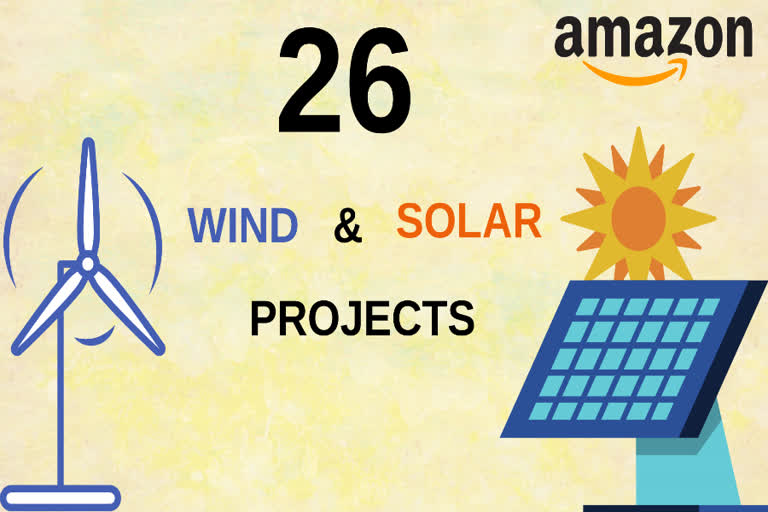The procurement of 26 wind and solar projects moved the Seattle commerce behemoth's goal of powering all of its operations with renewable energy five years closer.
"We are on a path to running 100% of our business on renewable energy by 2025 — five years ahead of our original target of 2030," Amazon CEO Jeff Bezos said. "This is just one of the many steps we're taking that will help us meet our Climate Pledge," he added, referring to Amazon's commitment to be carbon neutral by 2040.
Google had previously been the largest corporate purchaser of renewable energy, claiming that title in 2019.
Amazon's new projects, located in Australia, France, Germany, Italy, South Africa, Sweden, the U.K., and the U.S., will have the capacity to produce 3.4 gigawatts of electricity. The company didn't provide a figure for the cost of the projects.
Since 2015, Amazon has backed a total of 127 such wind and solar deals, with a capacity of 6.5 gigawatts — enough to power 1.7 million homes in the U.S. for a year, though Amazon's energy needs are far greater than the typical American home. A large 100-megawatt data center, for instance, uses as much energy as 80,000 households, according to data from the Department of Energy.
Between its own projects, and sources of renewable energy already feeding into the electric grids powering Amazon infrastructure, 42% of the company's operations in 2019 were powered by renewable energy.
But Amazon's real estate footprint — and its need for power — are growing fast. The company ended 2019 with 333 million square feet of warehouses, data centers, office space, and physical stores, including Whole Foods grocery stores. This year alone, Amazon has expanded its fulfillment center footprint by 50% to meet pandemic-driven surges in online shopping, according to a recent federal securities filing. Meanwhile, work-from-home policies and online schooling have led to rising demand for new data centers from Amazon and other cloud-computing providers like Microsoft and Google, said Conan Lee, a data center analyst at commercial brokerage JLL.
Amazon's expanding need for energy means that while procuring additional power from renewable sources is a "major" step forward in fighting climate change, the company has more work to do on sustainability, said University of Washington professor Stuart Adler, who researches energy storage at the school's Clean Energy Institute.
As it stands, Amazon is typically pumping energy from renewable sources into the electric grid to replace the energy it uses from nonrenewable sources, like coal. Since wind turbines and solar panels don't generate electricity all the time, "to really get to 100% renewable energy, we need energy storage," Adler said.
Technologies to store renewable power, though, lag far behind the ability to produce energy from solar panels and wind turbines. Solar-charged batteries strong enough to power a house are expensive and only last for a few hours — so when "5 p.m. comes, all the coal-fired power plants light up again," Adler said.
His lab is working with Microsoft to store renewably generated energy at data centers that can later be juiced back into the grid, and on other energy solutions for power-hungry server farms.
An Amazon spokesperson did not respond to a question about whether the company is investigating energy storage.
The company's decisions about where to locate its physical infrastructure also play a large role in Amazon's energy footprint, a 2017 Greenpeace report found, as some utility companies rely more on renewable energy than others.
©2020 The Seattle Times.
Distributed by Tribune Content Agency, LLC.
Also Read: Web scraping is a tool, not a crime



